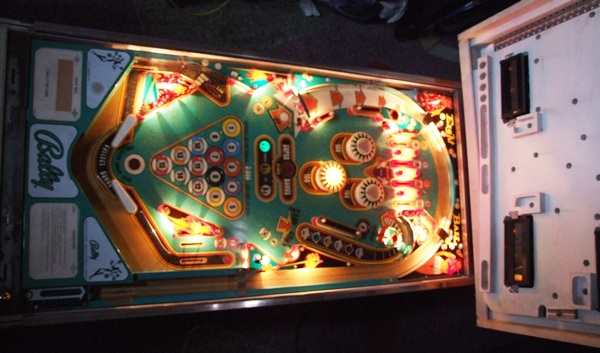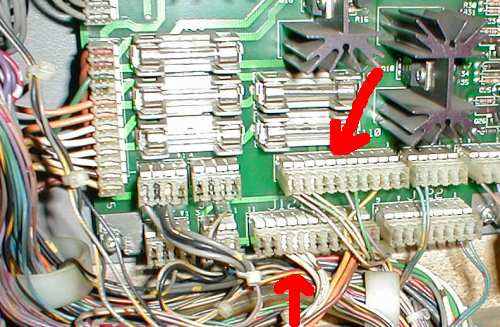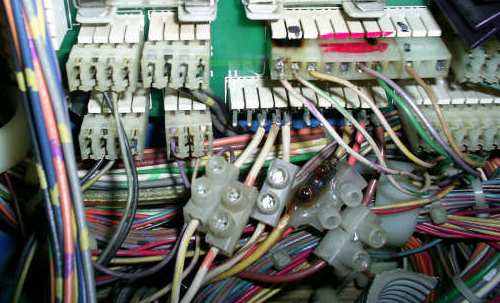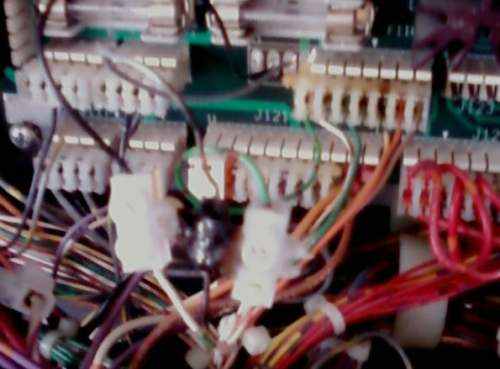General Illumination Circuit on WPC Pinball Machines
GI, or General Illumination, is a term you'll often encounter on pinball repair websites. It refers to all the lightbulbs that are not controlled by the processor of the pinball machine. When you switch the game on, these GI lights immediately turn on. So no, just because the lights come on doesn’t mean the game is functioning properly!

Only static lights, no blinking lights, nothing on the score displays ?
It's dead Jim..
The issue with most machines is that the connectors and components used for GI tend to degrade when games are left powered on for extended periods. Some machines on location are only turned off for a few hours at night, or not at all for days, weeks, or even months. Over time, the connectors and header pins can discolor and burn. If the damage becomes severe, they must be replaced.
In the past, some pinball owners replaced #44 light bulbs with #47 types. These bulbs draw less current, which reduces stress on the components. However, they emit noticeably less light. Personally, I’m not a fan of dim lighting. Most modern games already have fewer bulbs on the playfield, and in home use, machines typically aren’t left on for hours each day. Nowaday you can buy led replacements. These draw a lot less current..
The connectors and header pins that supply power to the GI lamps often overheat and burn, which increases resistance and generates even more heat. Replacing them is the only reliable solution. But this repair requires soldering skills. If you're not confident with a soldering iron, it's best to leave it to someone experienced.
I’ve also heard that some pinball shops spread the idea that it’s safest to replace all GI pins and connectors (and all capacitors while you're at it) on every machine. While this might be necessary in theory, it’s rarely needed in practice. Yes, if you do a complete revision, then you should do this. But only do this if you are experienced in soldering and pinball repair. I've had beginners who followed this advise and they damaged their expensive boards.
Replacing parts 'just in case' when you're not skilled at soldering can actually cause more problems. So what can you do to prevent damage if you’re not comfortable with soldering? Plenty!
First, replace the incandencent light bulbs with leds. This will drastically reduce the power draw, and thus the heat and wear and tear on all circuits involved. Replacing light bulbs is something everyone can do when they shop their game.
Don’t leave your pinball machine on for long periods. It can handle it, but if you’re not actively playing, it’s better to switch it off. On WPC games, it’s important to adjust the power saver settings. In Adjustments A1, set the Power Saver Level to 4 (default is 5) and the Power Saver Time to 2 minutes. If the game isn’t played for 2 minutes, it will automatically dim the bulbs slightly.

Connectors J120 and J121 supply GI power to the playfield and backbox. These connectors are interchangeable, each pin on J120 corresponds to the same pin on J121. This means you can swap them without any issues. It’s a simple and effective trick, especially when you buy a machine that was previously on location.
Usually, only a few pins are commonly used on both connectors. The rest are unused on one of them. If a non-common pin starts to discolor on one connector, just swap J120 and J121. The damaged pin will no longer be used and won’t deteriorate further.
Note: This trick is only safe if the connectors still look clean, like the picture above. If they resemble the burned connectors in the pictures below, then both the connectors and pins must be replaced.



Poor repairs won’t last. Even in this cellphone photo, you can see wires soldered directly to the header pins. Three wires had connector strips, the middle one melted completely!
If you're looking for pinball parts, then check out Pinballshop.nl (affiliate link).
